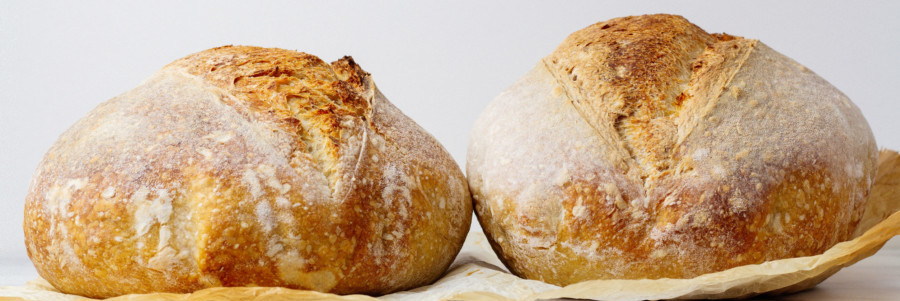
Artisan bread with its simple, clean label is a popular choice for consumers these days. So, many artisan bakeries are scaling up to the industrial level. Here are some things to keep in mind when running a high output artisan bread line.
What is artisan bread?
Artisan bread contains natural and high-quality ingredients. While it traditionally required manual baking skills, it can be industrially produced today. It comes in all shapes and sizes, but it usually has a boule- or batard-like shape with cuts on the loaf’s surface. These breads are typically stored in the ‘fresh’ section of supermarkets and perceived as cleaner and more natural products. A few key characteristics are:
- Flavor and aroma: artisan bread baking relies on traditional fermentation methods resulting in superior and varied flavor profiles. Bakers often add spices or herbs to enhance the sensory properties.
- Crumb and structure: compared to artisan bread, mass-produced conventional bread has a dry crumb and a closed structure.
- Artisan bread contains more air pockets. These pockets spread evenly to form a firmer and more hydrated crumb.
- Health benefits: artisan bread has a better nutrition property as it contains less chemical ingredients. Additionally, enzymes in bread start breaking down gluten at a very early stage due to longer fermentation times.
How to develop industrial artisan bread
The eight most important aspects for developing industrial artisan bread are:
- Lean Formulation: minimal chemical ingredients used with the possibility to use flour improvers such as enzymes or diastatic malt
- Leavening: use of sourdough starter or yeast preferments
- Proofing: cut dough’s crust and decorate in different styles
- Baking: dough is not placed inside a metal pan but baked directly on the hearth of the oven
- Texture: chewy and leathery crust with a moist and gummy crumb
- Crumb: open with irregular holes
- Loaf flavors: strong flavors ranging from sweet, fruit, and dairy to sour and roasted notes
Ensure baking quality
Time and temperature control are crucial when baking industrial artisan bread. The exact values for thermal events depend upon product temperature, size, and oven type. Controlling baking time-temperature results in:
- Improvement in sensory qualities: developing a better crumb quality
- Reduction in water activity: decreasing microbial growth
- Improving over output: control energy consumption and reduce monetary values.
- Reduced cooling time: greater efficiency and lowered production cycle time.
It is essential to study the thermal profile of artisan bread. Artisan bread relies primarily on the contact surface and conduction from hearth and oven heat radiation. A higher length of time for the dough to reach the final temperature expresses a higher arrival value. Higher arrival times can result in quality issues such as:
- Higher crumb moisture content
- More mold inhibitors and preservatives are required.
- High microbial instability and probabilities of mold growth
- Longer cooling time required
- More slicer issues due to gumming
Lower arrival values result in lower bread water activity and higher mold-free shelf life. Extremely low arrival values can result in high staling rates and crumbliness.
Want to learn more about how to the industrial artisan bread baking process? Find more resources on the BAKER Academy!

